Reflective Essay on Knee Assessment Course and Its Impact on Practice
VerifiedAdded on 2023/06/10
|6
|1225
|143
Essay
AI Summary
This reflective essay summarizes a knee assessment course focused on the influence of hip and pelvis mechanics on knee injuries. The author details the course's content, including the importance of understanding the relationship between knee and hip mechanics for accurate diagnosis and treatment. The essay highlights the key learnings, such as the different factors contributing to knee pain, objective tests for measuring knee injury, and the important questions to ask during a subjective examination. The author emphasizes the practical application of this knowledge in future practice, including how to conduct thorough examinations, provide accurate diagnoses, and develop effective treatment plans. The course provided insights into the different factors that bring about knee pain or injury namely overuse of the knees, adopting a bad posture when walking, running or even sitting, any external or internal infection that may occur in and around the knee area and stretching the muscles of the knee in an improper manner. The author explains the importance of asking the right questions to the patient in order to arrive at a proper diagnosis of his ailment. The author also gained knowledge about different physical injuries that need to be looked out for such as swelling and bruises among others when subjectively examining a patient, in order to determine the extent of the injury that has taken place. The author concludes by reflecting on how the course has affirmed and influenced their future practice, emphasizing the ability to assess knee injuries efficiently, provide conclusive diagnoses, and offer appropriate treatments.
1 out of 6
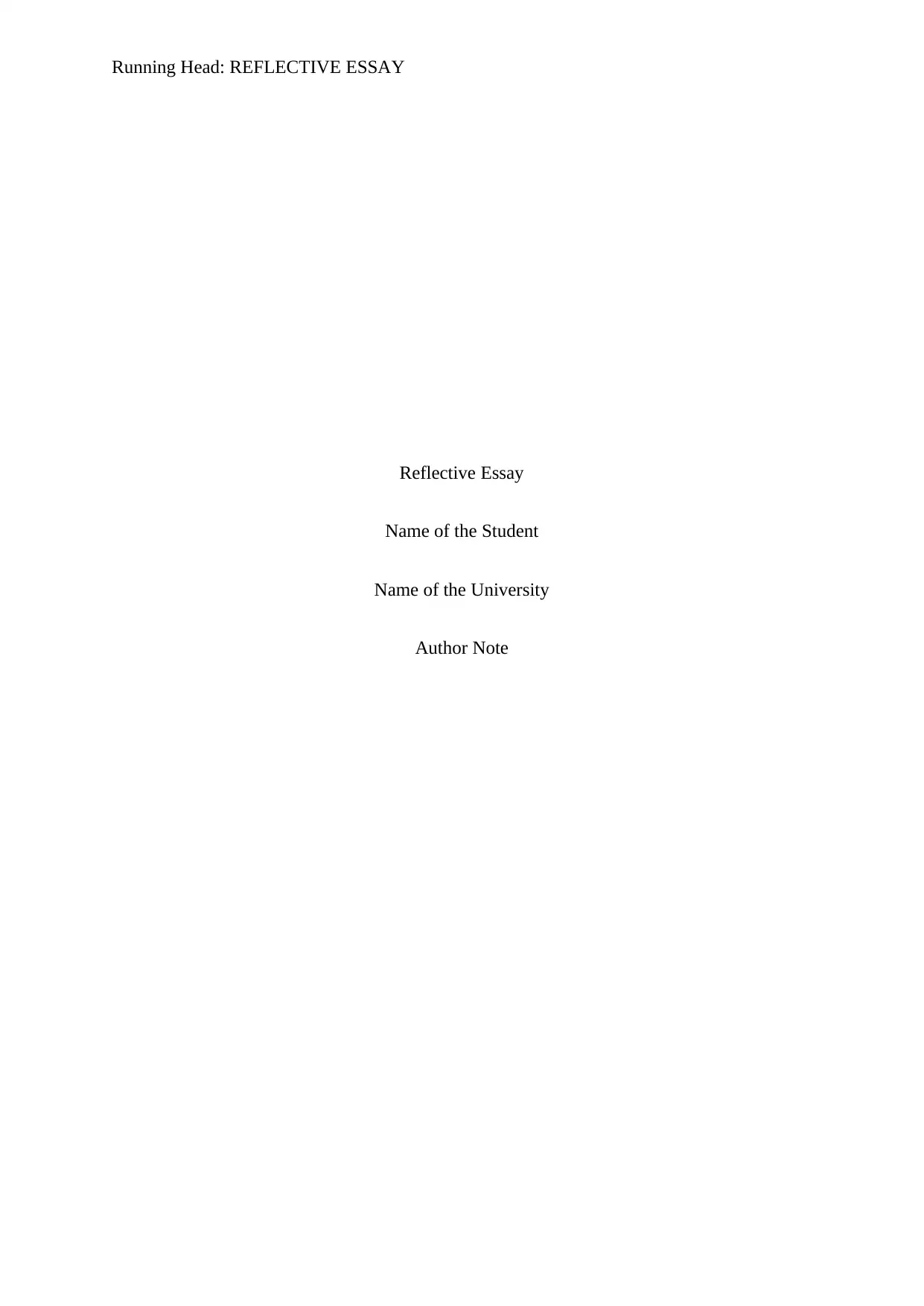
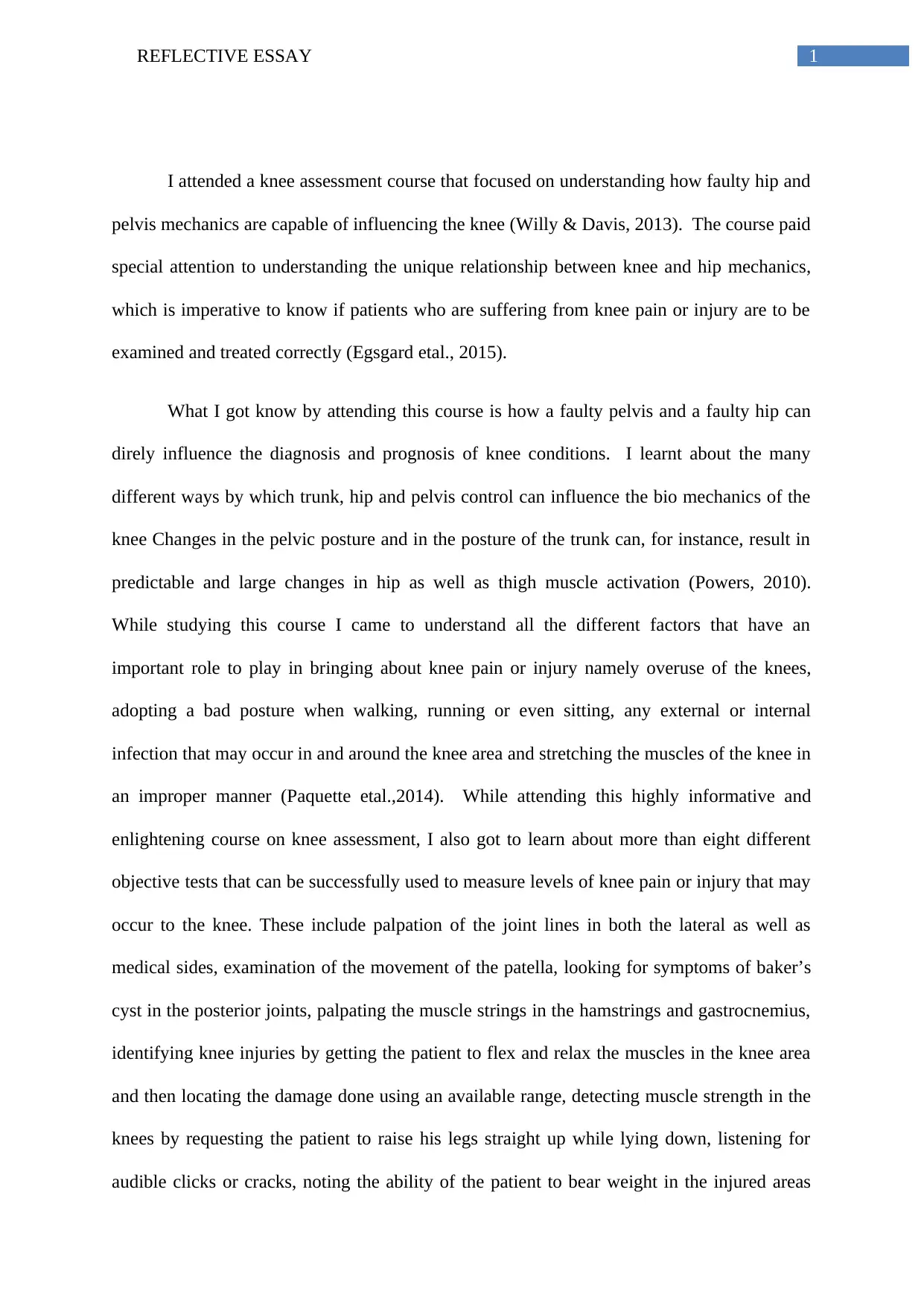
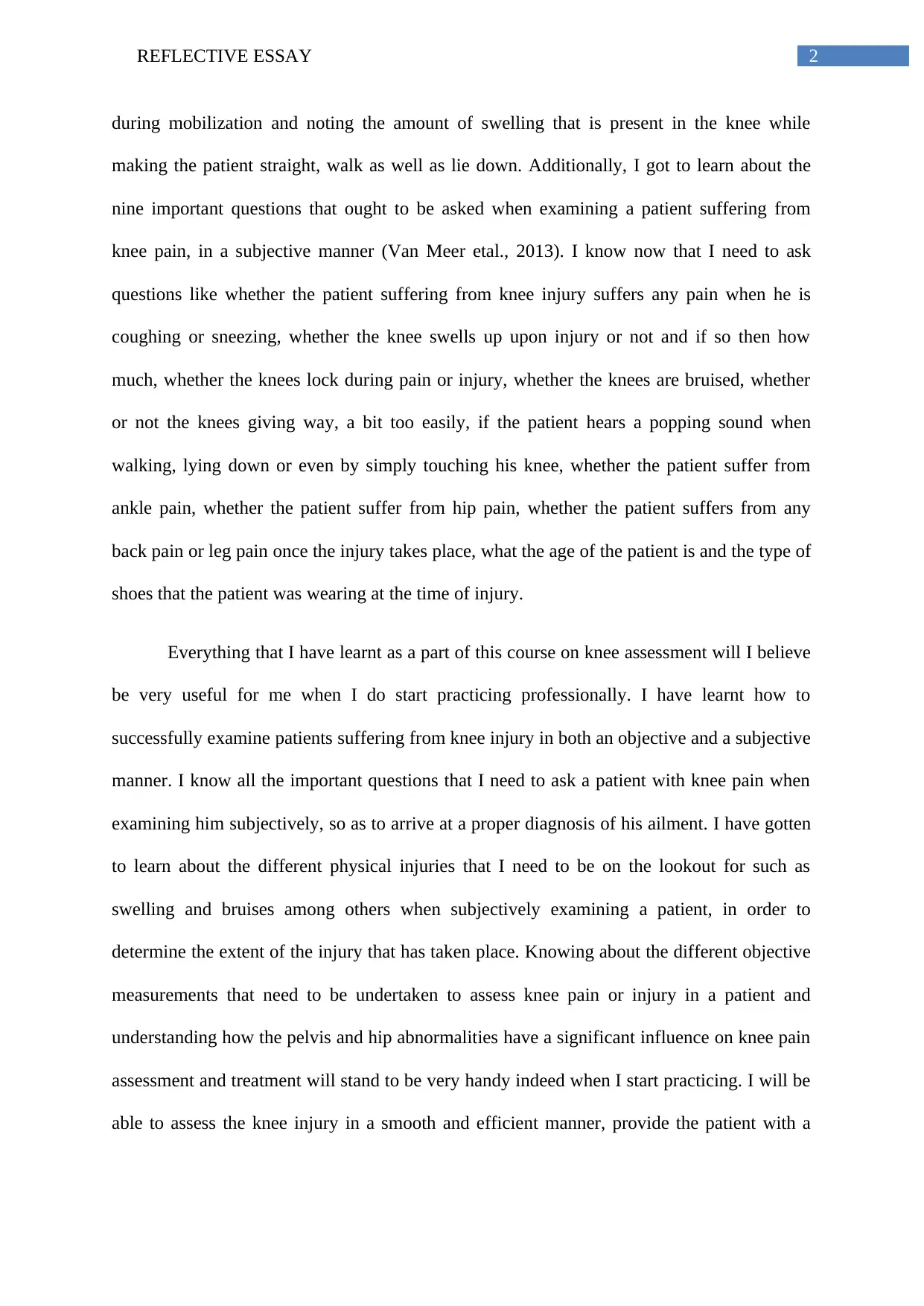

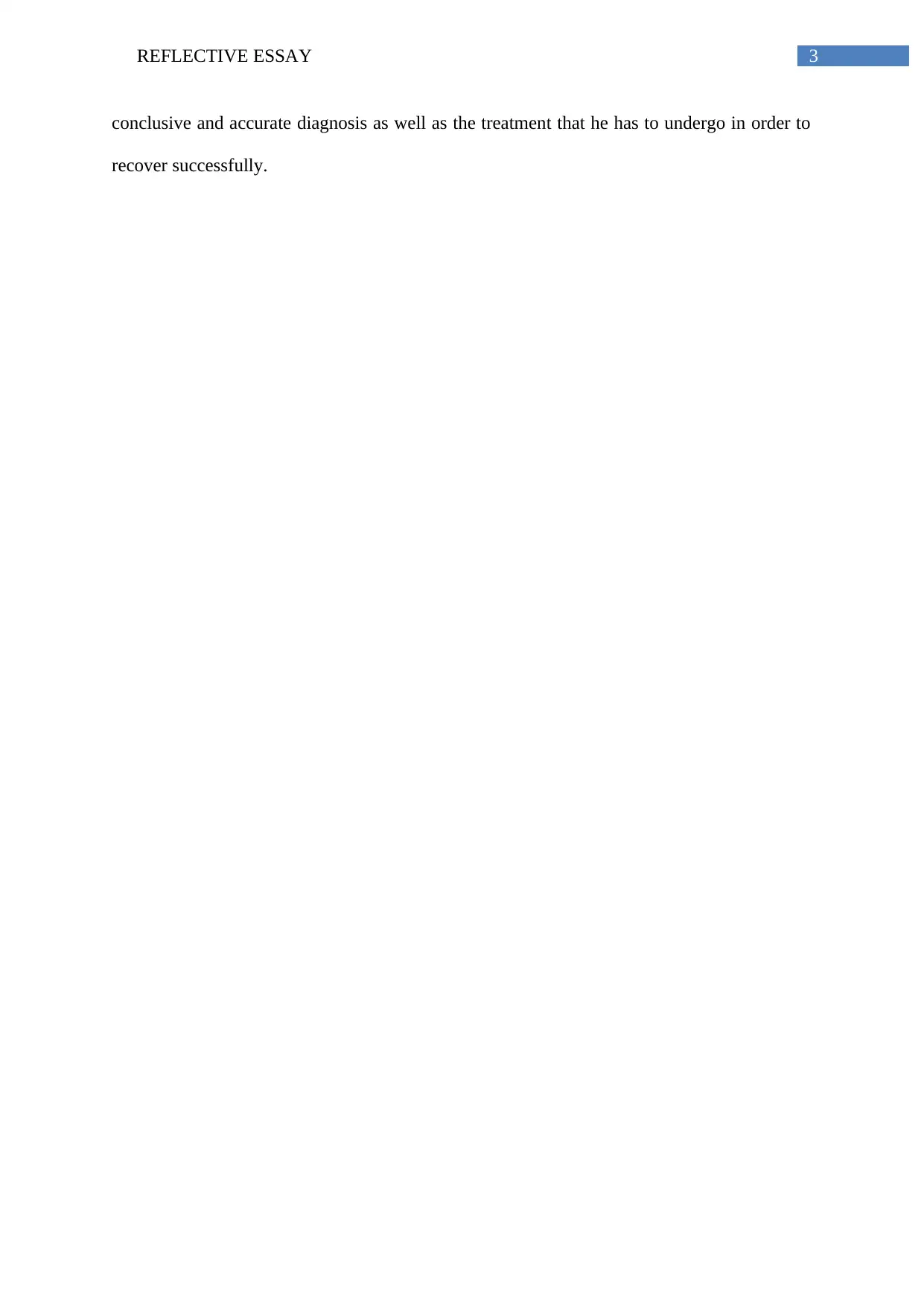
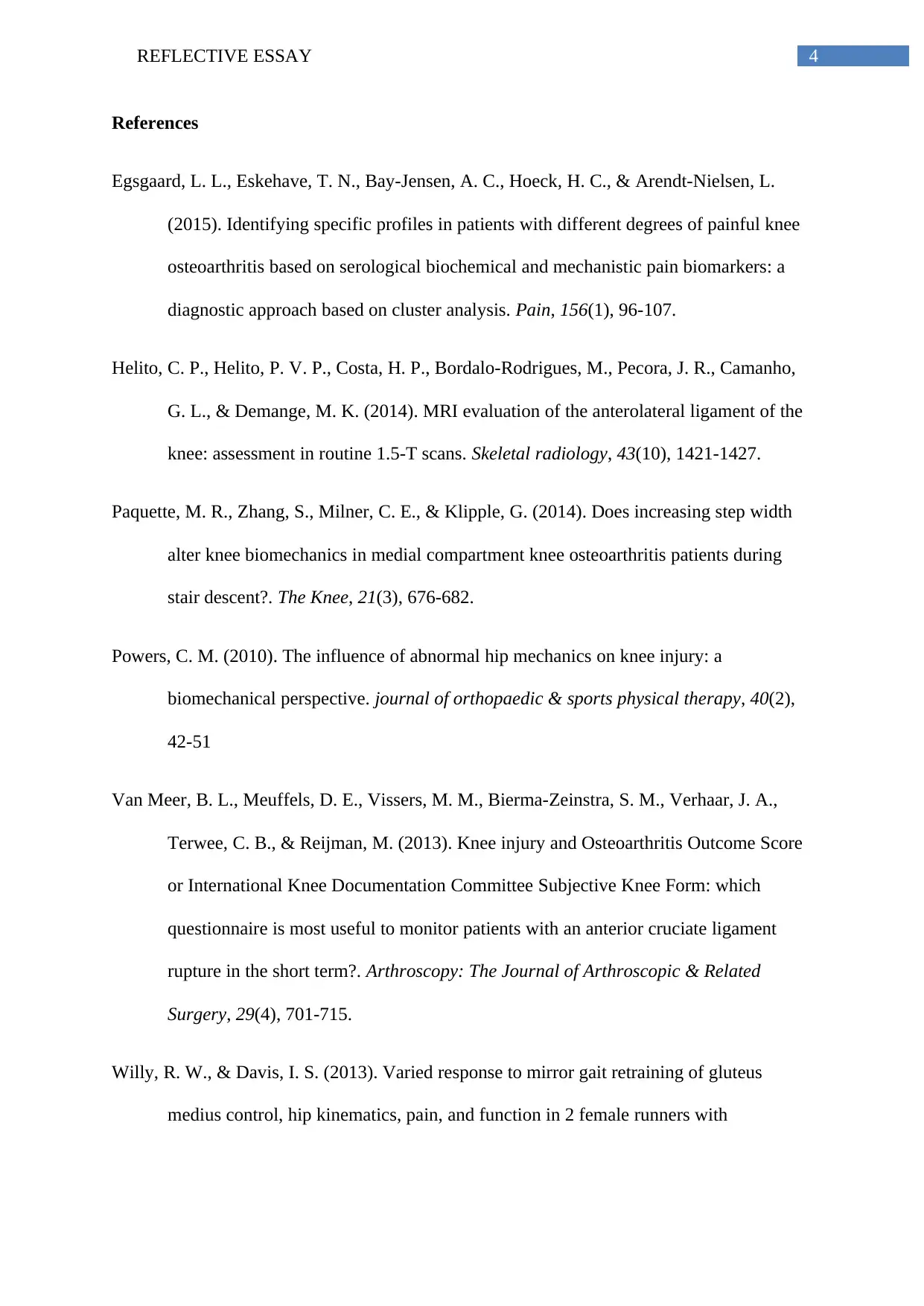
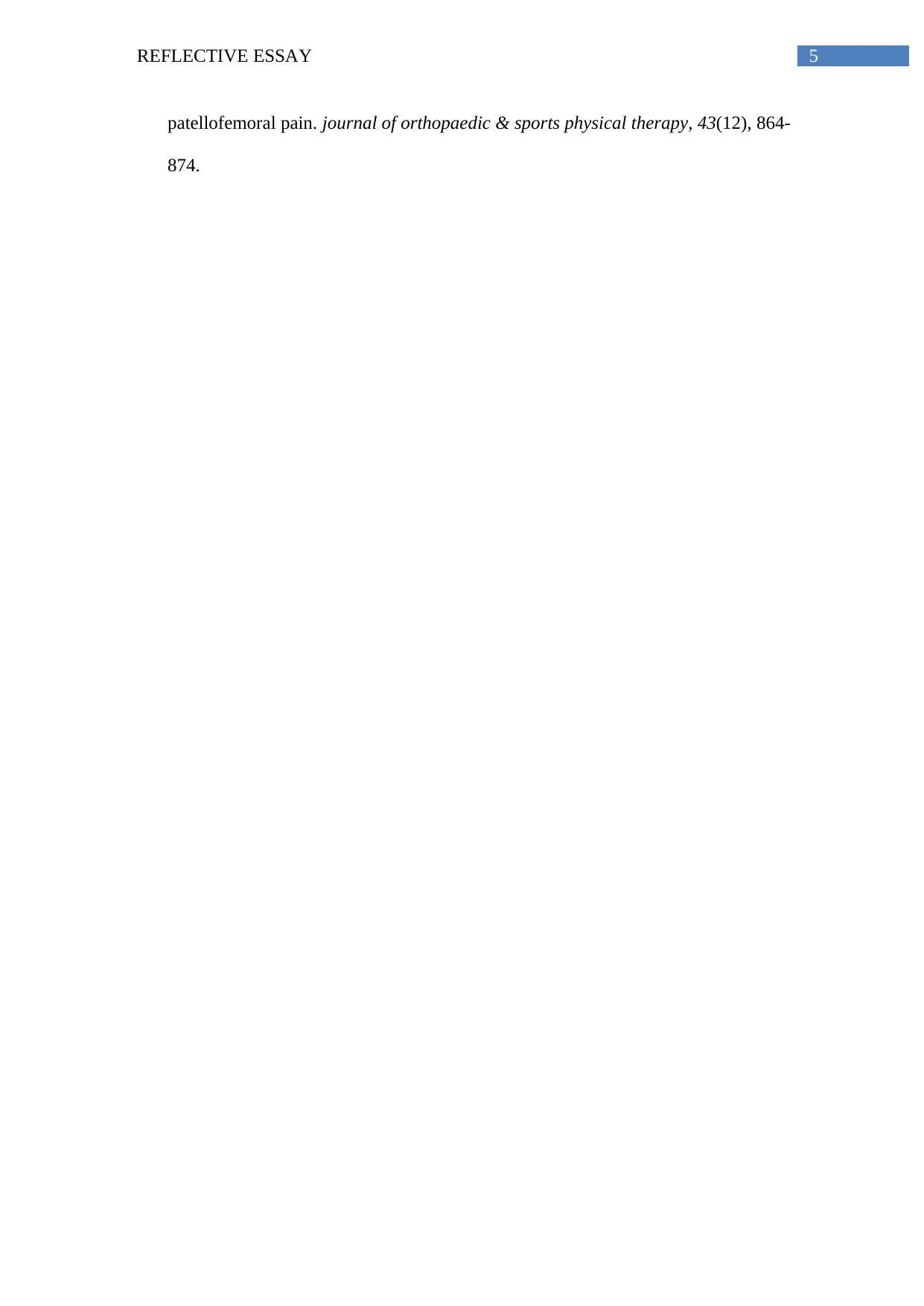
![[object Object]](/_next/static/media/star-bottom.7253800d.svg)